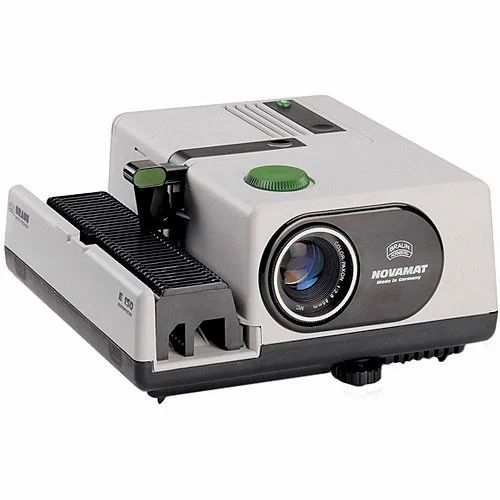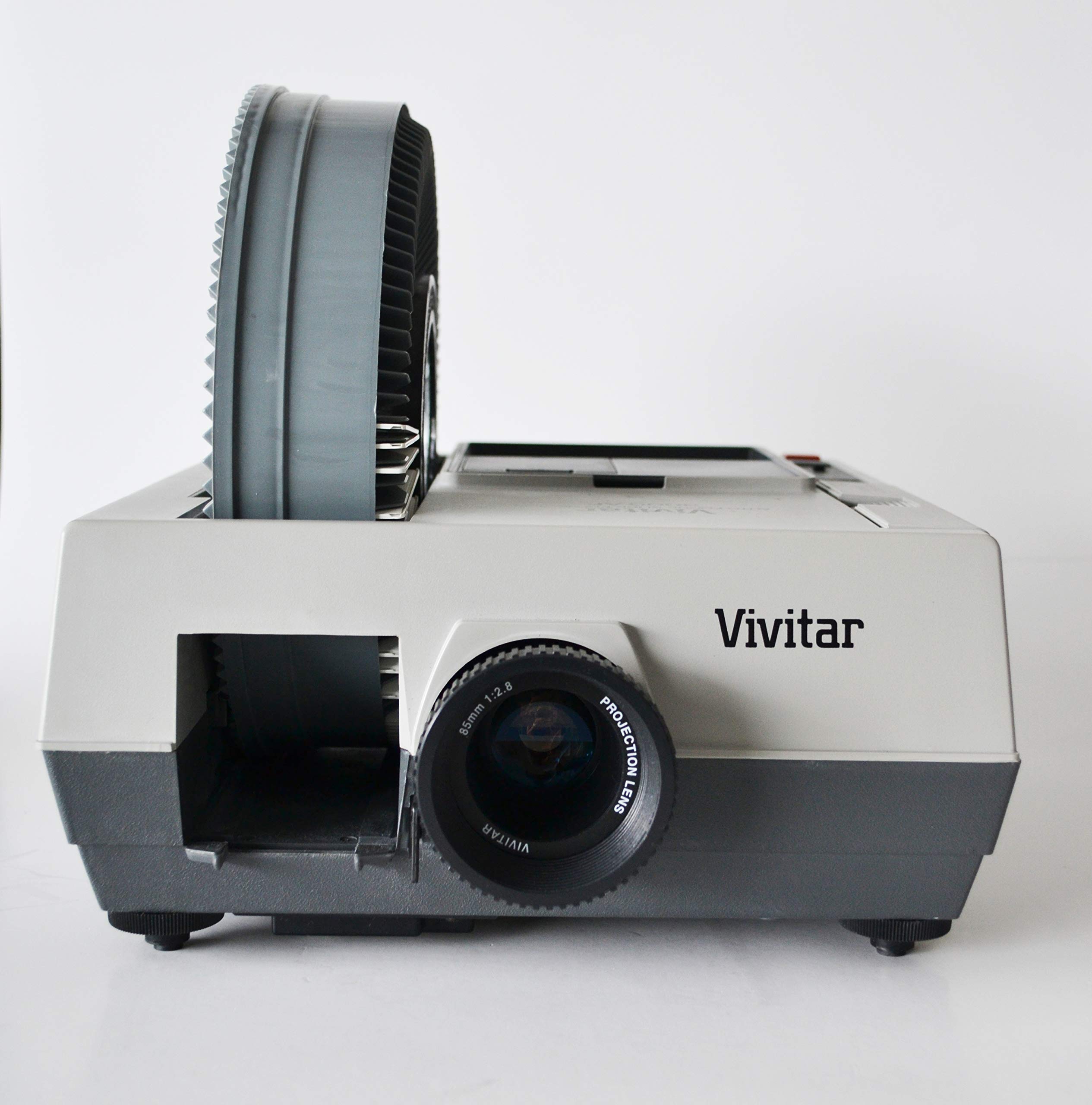Unfolding the Slide Projector: A Comprehensive Overview
Introduction
Slide projectors might appear as a relic from an obsolete era to the digital natives of today, but these devices have a history and charm that is enduring and fascinating. This comprehensive guide aims to explore the journey of slide projectors from being a dominating presentation tool to playing an iconic role in the realm of vintage equipment. From the basics about what slide projectors are and how they function to their evolution and relevance in the digital era; we will explore it all. Let's delve into this journey which is not just about technology but also about preserving memories and appreciating history.
What is a Slide Projector?
Understanding the Essence of a Slide Projector
At its core, a slide projector is an opto-mechanical device meant to showcase images stored on slides by projecting them onto a larger screen. Originating from a simpler time, the prime versions required manual operation with the user inserting and removing each slide after viewing. Today, however, advanced designs effortlessly support automatic systems that allow smooth, sequential display of multiple slides.
Overview of the Fundamental Operations of a Slide Projector
The primary operations of a slide projector revolve around three basic components:
- The Light Source: Illuminates the slide to make the image visible.

- The Slide Holder: A device within the projector where a slide bearing an image, is placed.
- The Projection Lens: Once the light passes through the slide, this lens serves to project the now illuminated image onto the screen.
In effect, the mechanics of a projector are straightforward to comprehend. Light from the source traverses the slide, illuminating a transparent film carrying the image, which, by the aid of the lens, gets magnified and projected onto a screen.
How Did the Slide Projector Evolve?
Tracing Back the Timeline of Slide Projectors
Highlighting the Progressive Upgrades in Slide Projector Technology
Tracing Back the Timeline of Slide Projectors:
Diving into the annals of history, we discover the roots of slide projectors in the 17th century with the advent of 'magic lanterns'. These lanterns utilized glass slides with painted images to conduct visual presentations. However, it was the dawn of the 20th century that marked the beginning of the era of modern slide projectors, thanks to the invention of transparent plastic slides.
Highlighting the Progressive Upgrades in Slide Projector Technology:
Over the years, slide projectors underwent several notable evolutionary jumps:
- Adoption of Automated Slide Trays: This technology allowed a series of slides to be displayed sequentially, cutting down on manual handling.
- Advanced Lenses: Focus and clarity got a boost with this upgrade, enhancing image quality.
- Remote Control Operability: Added convenience to the operating process making management of slide shows hassle-free.
However, the surge in digital technology in the late 20th century heralded a decline in the popularity of traditional slide projectors. With convenience and high-resolution displays, digital media overshadowed traditional slide projection in both professional and personal spheres. Yet, the slide projector still retains its charm, used in select artistic areas and loved by vintage technology enthusiasts.
What Makes a Slide Projector Work?
Identifying the Key Parts of a Slide Projector
A slide projector is a marvel of optical and mechanical engineering, made up of three vital components.
- Light source: Traditionally an incandescent bulb. Its primary purpose is to generate enough brightness to shine through the slide.
- Slide: A transparent plastic or glass slide, which holds the image. The light source illuminates the slide, enabling the projection of the image.
- Lens: A sophisticated optical instrument that takes the illuminated image from the slide and projects it onto a larger viewing area such as a screen, greatly magnifying the image in the process.
Understanding the Projection Process
The fundamental theory behind a slide projector's operation is simple, yet fascinating. It involves the conversion of a small, transparent image into a significantly larger one for easy viewing. Here's a basic rundown of the process:
1. Illumination: Once you've turned on the projector, the light source emits bright light.
2. Transparency: The emitted light shines through the image on the slide, which's often a positive film, casting the image in vivid detail.
3. Lens action: The lens, a carefully crafted optical instrument, receives the illuminated image. It focuses and converges the light onto a larger area—the bigger the distance to the screen, the larger the image.
4. Magnification: The original, small image from the slide becomes a larger, highly magnified one. This process is what allows easy viewing of the image, even from some distance away.
5. Focus adjustment: The projection process isn't over once the image hits the screen. Most projectors allow you to manually fine-tune the lens until the image is sharp and clear.
Each of these steps blends optical science and engineering expertise, enabling the projector to perform its primary function: to transpose a small, static image into a larger, life-like one for public viewing.
How Can You Effectively Utilize a Slide Projector?
A Step-by-step Guide to Operate a Slide Projector
Operating a slide projector may seem tricky initially, but with practice, it can be mastered. Here's a simple step-by-step guide to assist you through the process:
Step 1: Slide Loading - The first step involves placing your chosen slide into the designated slide slot of the projector.
Step 2: Powering Up - Turn the projector on. The built-in light source will come to life, illuminating the slide.
Step 3: Image Focusing - Using the lens controls, you can adjust the clarity and size of the projected image until it is sharp and vivid on your chosen projection screen.
Handy Tips to Get the Most Out of Your Slide Projector
Mastering the basic operation of a slide projector is just the beginning. To truly maximize the usage of this device, consider these crafty tips:
1. Lens Maintenance - Regular cleaning of the projector lens ensures the best possible image quality. Always ensure the lens is free from dust and smudges.
2. Slide Organization - When using a slide projector for presentations, remember to arrange your slides logically to facilitate smooth transitions.
3. Ideal Projection Surface - Ideally, make sure that the surface onto which you're projecting is reflective for optimum visibility. A white or light-colored wall works best.
4. Use Manual Override - If you need to hold a particular image on screen for longer during presentations, utilize the projector's manual override feature.
While the digital age offers us a myriad of options for displaying information, the slide projector remains a tool that can impress given its unique and nostalgic appeal. Mastering the use of a slide projector can help add an innovative touch to your presentations and events, making them memorable and engaging.
Why are Slide Projectors Still Important in the Digital Age?
The Fusion of Traditional and Modern Applications of Slide Projectors
With digital display technology taking the spotlight in modern times, the traditional charm and utility of slide projectors might seem obscured. However, these devices continue to hold significance in certain functional areas:
- Photography: Slide projectors add a vintage touch to the presentation of photos, something digital platforms can't replicate.
- Art Installations: Artists often leverage slide projectors to create unique light effects and interactive installations.
- Theater Performances: Some theater groups utilize slide projectors for innovative storytelling methods, enhancing the dramatic impact.
Analyzing the Continued Relevance of Slide Projectors
Despite the digital era's pixel-driven displays, here's why slide projectors remain relevant:
- Nostalgia: These gadgets evoke a sense of nostalgia and a connection to a simpler past, appealing to many technology enthusiasts.
- Collector’s Artefacts: Slide projectors are valuable vintage collectibles, treasured by collectors for their historical significance.
- Educational Aid: In certain educational settings, specifically arts and photography studies, they provide an invaluable tool for teaching students about the evolution of technology and visual art presentation.
- Distinct Viewing Experience: Slide projectors, with their radiant display of images, offer a viewing experience that digital screens cannot duplicate.

Thus, the slide projector's significance extends beyond its functional use, symbolizing an era marked by simplicity and innovative solutions. Even in the digital age, a slide projector serves as a historical reminder of our technological journey, a treasured collector's item, and a unique tool for artists and educators alike. It may be an echo from another era, but its resonance is still perceived and appreciated today.
Conclusion
From dissecting the concept and mechanics of slide projectors to evaluating their vestigial impact in a digitized world, we've unravelled the world of these fascinating devices. Beyond the tangibles, slide projectors symbolize an era of simplicity and ingenuity, continuing to capture interest till today.
Related FAQs about what is slide projector
What are some common issues with slide projectors and how can you troubleshoot them?
Common issues with slide projectors include blurry images, overheating, and jammed slides. Blurry images can be fixed by cleaning the lens or adjusting the focus knob. Overheating can often be mitigated by ensuring the machine is off when not in use. A jammed slide may require manual removal or slight adjustment depending on the model and severity of the jam.
How has digital technology influenced the functionality of modern slide projectors?
Digital technology has greatly impacted modern slide projectors. They have become automated and compact, improving the convenience of usage. Newer versions can project digital images onto physical surfaces and, in some cases, have USB and Bluetooth connectivity. Some even have built-in editing software to manipulate the slides before projection.
What are some creative ways to use a slide projector in present times?
Slide projectors can be used creatively in many ways today. You can use them in themed events for a vintage touch, in art installations, or theater performances for storytelling. Some photographers and artists use slide projectors to create 'light paintings'. They can also serve as a unique tool for educating students about the evolution of technology.


